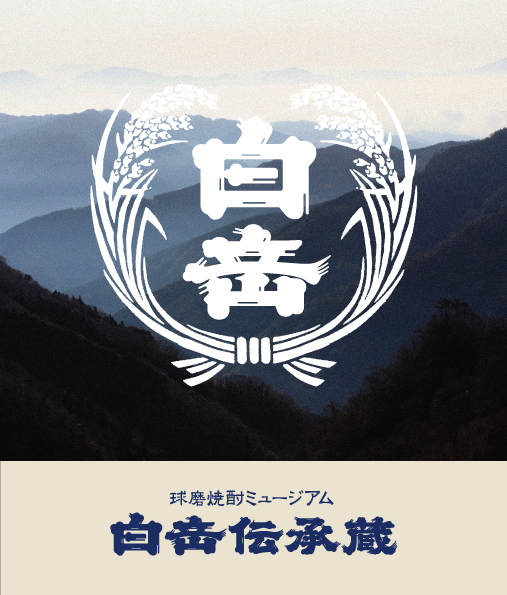
1. Greetings
Thank you for visiting the Hakutake Denshogura, Kuma Shochu Museum, today.
The home of Kuma Shochu is a basin surrounded by deep and mysterious mountains that run along the Kyushu Mountains.
From those beautiful mountains flows pristine water which runs into the Kuma River, one of Japan's three fastest rivers.
The rich land, nurtured by the dramatically fluctuating climate typical of a basin, is one of few places in the prefecture ideal for growing rice and produces the finest Kuma Shochu.
Takahashi Shuzo began producing shochu in 1900.
There were never many opportunities to enjoy Kuma Shochu outside of the local area because of its distinct flavor and so Takahashi Shuzo was determined to 'create a brand of shochu that everyone could freely enjoy'. So, in 1974, the company incorporated a new technique known as vacuum distillation and succeeded in raising the brand's profile all over Japan.
The Hakutake Denshogura Museum showcases the history and culture behind Kuma Shochu, as well as the traditional way of producing shochu.
You can also learn about the history of Takahashi Shuzo from the numerous TV commercials and advertising posters on display, and purchase our products,
limited-edition merchandise and local delicacies from Kumamoto Prefecture.
We hope this will help to spread the 500-year history and cultural value of 'Kuma Shochu', something of which we are very proud in the world.
Please enjoy your visit.
index
3. Is Kuma Shochu Japan's oldest brand of Shochu?
4. Shochu - loved by the samurai and working class alike
6. To Japan and the rest of the world
7. The traditional method of producing shochu
8. Washing and steaming the rice
10. Producing the primary mash



